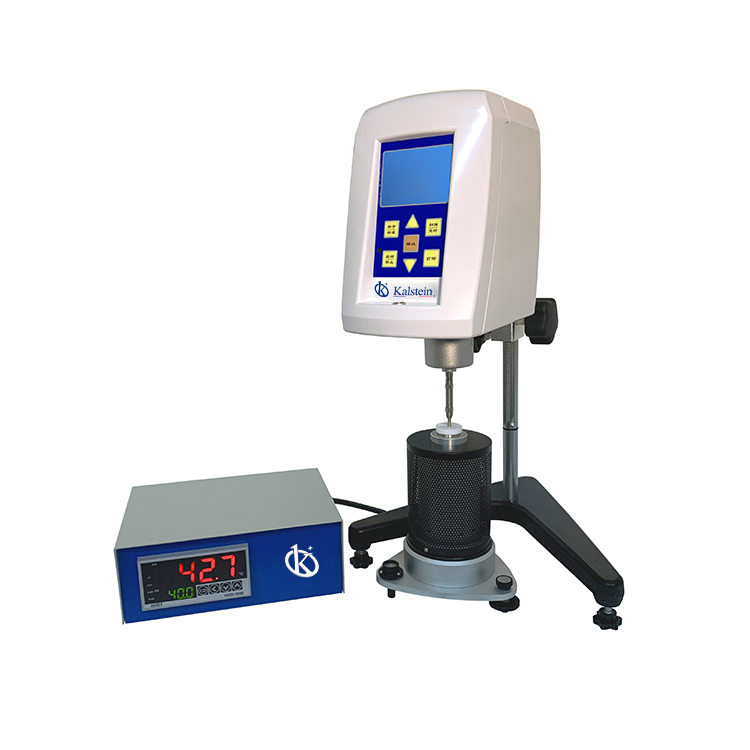In the rapidly evolving scientific landscape, precision instruments like high-temperature viscometers have become indispensable in laboratories worldwide. These devices provide invaluable insights into the viscosity properties of substances at elevated temperatures, which is crucial for various industrial and research applications. Today, we’re comparing the High Temperature Viscometer YR05843 / YR05846 from Kalstein with the HTDV 1100 High-Temperature Viscometer from Brookfield, two leading products in this domain.
The High Temperature Viscometer YR05843 / YR05846 by Kalstein represents the pinnacle of innovation in the field. Designed to deliver highly accurate measurements, it is equipped to handle a broad range of samples with variable viscosities at high temperatures, making it an ideal choice for laboratories that demand reliability and precision. On the other hand, the HTDV 1100 by Brookfield has earned a solid reputation for its robustness and ease of use, making it a favorite among users who prioritize straightforward functionality.
| Feature | Kalstein YR05843 / YR05846 | Brookfield HTDV 1100 |
|---|---|---|
| Temperature Range | Broad range suitable for various applications | Limited compared to YR05843 / YR05846 |
| Sample Capacity | Multiple capacities available, accommodating diverse sample sizes | Standard size range |
| Accuracy | High precision with minimal error margin | Reliable but with slightly higher error margin |
| User Interface | Intuitive and user-friendly interface | Basic interface, easy to navigate |
| Price | Competitive pricing with options for customization | Pricier for similar features |
How They Work
The Kalstein YR05843 / YR05846 viscometer operates using advanced rotational technology to measure viscosity under high temperatures accurately. It adapts seamlessly to varying sample characteristics, ensuring precise adjustments to conditions, which is vital for consistency and reliability. The Brookfield HTDV 1100 also employs rotational viscometry, albeit with a layout that is geared towards simplified functionality for users who might not need the enhanced adaptability offered by Kalstein’s model.
What Are They Used For
These viscometers are essential in conducting thorough analyses of a substance’s rheological properties, particularly valuable in industries like petrochemical, food & beverage, and pharmaceuticals. The insights provided on viscosity are critical for quality control, product development, and ensuring compliance with industry standards.
Types
Both the Kalstein and Brookfield models fall under the category of rotational viscometers but serve distinct purposes depending on their specifications. The YR05843 / YR05846 by Kalstein offers versatile configurations suitable for comprehensive analytical requirements, while the HTDV 1100 by Brookfield is tailored for more routine, straightforward viscosity measurements.
Market Pricing
The pricing spectrum for high-temperature viscometers varies considerably based on features and brand reputation. Kalstein’s viscometers are competitively priced, offering excellent value through features and customization options. In contrast, Brookfield’s viscometer, while robust, tends to be on the higher end of the pricing scale for similar performance metrics.
Frequently Asked Questions
What is the main difference between these two viscometers?
The primary difference lies in the range of features and adaptability. Kalstein’s model has a broader temperature range and customization options, while Brookfield’s is more straightforward and user-friendly.
Which viscometer offers better precision?
Kalstein’s YR05843 / YR05846 is noted for its higher precision, with advanced technology ensuring minimal error margins.
Can these viscometers handle all types of samples?
Both models can handle a wide array of samples, though the Kalstein model offers more flexibility in sample capacity and type.
Advantages and Disadvantages
Kalstein’s viscometer shines in its precision, flexibility, and competitive pricing, making it a well-rounded choice for diverse laboratory environments. Some might consider the learning curve a disadvantage, given its advanced features. The Brookfield model is praised for its ease of use, although its less adaptable nature and higher cost might be drawbacks for some users.
Application in the Field
In real-world applications, both viscometers are crucial in quality assurance processes, ensuring substances meet specific viscosity parameters. Kalstein’s model stands out in research labs requiring high precision, while Brookfield’s model is perfect for standard monitoring tasks.
Recommendations
For optimal results, regular calibration of either viscometer is advised. Users of the Kalstein model should take advantage of its customizable settings for tailored results. Regular maintenance will prolong the lifespan and accuracy of these instruments.
For those looking to integrate cutting-edge technology into their laboratory, consider exploring Kalstein’s offerings. You can request a quote or explore our platform Kalstein Plus for automatic quotations. Discover a new standard in laboratory equipment.
If you’re looking for a fusion of innovation and quality, you’ve come to the right place. At Kalstein, we offer you the luxury of exploring our exclusive catalog of laboratory equipment. We manufacture each device with a level of excellence. Our intuitive and agile online purchasing channels are designed for your convenience, ensuring the most friendly prices. Don’t hesitate, we bring science to life; it’s time to be part of our community. https://kalstein.nl/product/high-temperature-viscometer-yr05843-yr05846/

